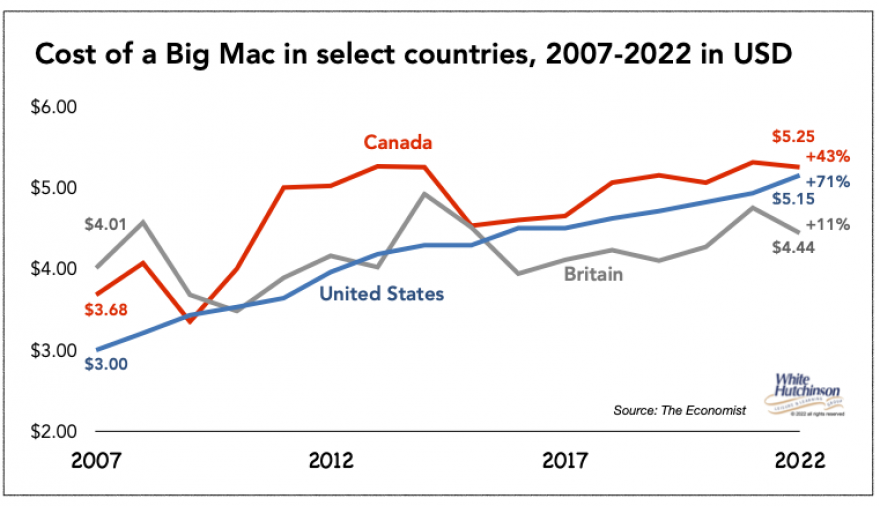
Vol. XXIII, No. 4, April 2023
- Editor's corner
- Are Dave & Buster's same store sales really increasing?
- The Big Mac index
- Satisfaction with attraction visits is down
- How much is time at your venue worth? Understanding the money value of time
- Gen Z slang
- Industry veteran still going strong at 90
- Human contact is becoming a luxury - The rise of participatory social eatertainment
- Possible explanation for declining births
- Who will pay extra fees for the ideal seats in a movie theater?
- More about the weekday daytime leisure economy
The Big Mac index
The Big Mac index was invented by The Economist in 1986 as a lighthearted guide to whether currencies are at their "correct" level. It is based on the theory of purchasing-power parity (PPP), the notion that in the long run, exchange rates should move towards the rate that would equalize the prices of an identical basket of goods and services (in this case, a burger) in any two countries.
The index was never intended as a precise gauge of currency misalignment, merely a tool to make exchange-rate theory more digestible. Yet the Big Mac index has become a global standard, included in several economic textbooks and the subject of dozens of academic studies. The index also gave rise to the word burgernomics.
We thought looking at it as a measure of restaurant inflation would be interesting. Over the past 15 years, the cost of a big mac in the U.S. has risen 71%. Since 2019, it has increased by 9%.

Subscribe to monthly Leisure eNewsletter
Vol. XXIII, No. 4, April 2023
- Editor's corner
- Are Dave & Buster's same store sales really increasing?
- The Big Mac index
- Satisfaction with attraction visits is down
- How much is time at your venue worth? Understanding the money value of time
- Gen Z slang
- Industry veteran still going strong at 90
- Human contact is becoming a luxury - The rise of participatory social eatertainment
- Possible explanation for declining births
- Who will pay extra fees for the ideal seats in a movie theater?
- More about the weekday daytime leisure economy


